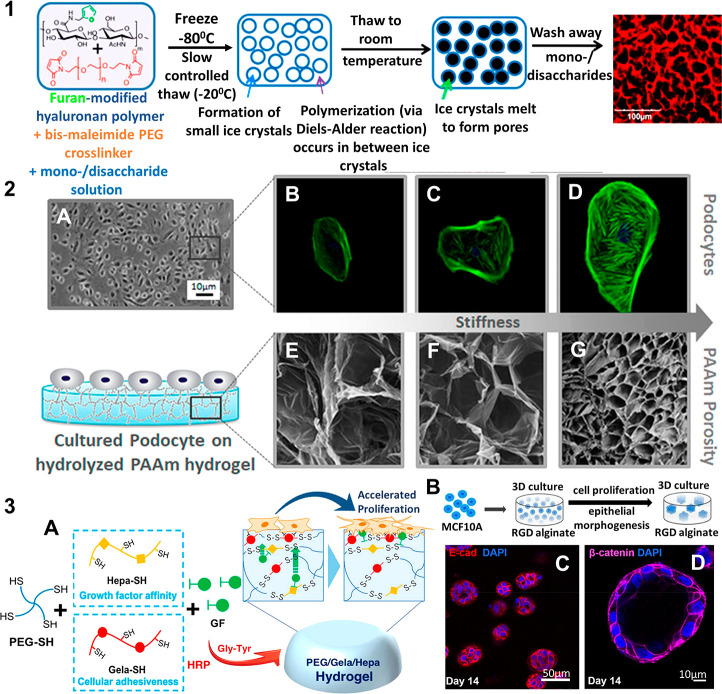Figure 5.
Optimization of hydrogel properties to mimic basement membrane structure and function: Modification of physical and chemical properties of hydrogels have been addressed in varying methods that allow their use as scaffolds to mimic BM: (1) Limitations of pore formation have been overcome using Diels–Alder click chemistry and cryo-gelation of the agarose and hyaluronic acid hydrogels. The polymer mixture is frozen, where the ice crystals slowly melt and are replaced by pores; reprinted with permission from ref (232). Copyright 2017 American Chemical Society; (2) Tunable physical properties of the hydrolyzed polyacrylamide (PAAm) such as stiffness (0.3–300 kPa) and pore size have been exploited to mimic the glomerular filtration barrier with the podocyte cells and also to study the influence of scaffold mechanical properties on such a filtration barrier in vitro; reprinted with permission from ref (248). Copyright 2019 American Chemical Society; (3A) Cell adhesion and proliferation on hydrogel BM mimics have been enhanced including the development of biofunctional PEG hydrogels using HRP mediated cross-linking of thiolated polymers, where the 4-arm PEG-SH was conjugated with thiolated gelatin (Gela-SH) and heparin (Hepa-SH); reprinted with permission from ref (249). Copyright 2019 American Chemical Society; (3B) hydrogels are commonly used to realize a 3D environment specifically for proliferation of breast epithelial cells as well as to mimic a tumor environment, where MCF10A cells are embedded in RGD functionalized alginate gels to form (3C) spheroids and (3D) acini like structures similar to in vivo; adapted with permission from ref (250). Copyright 2020 Barros de Silva. https://creativecommons.org/licenses/by/4.0/. Changes were made to copyright material.

